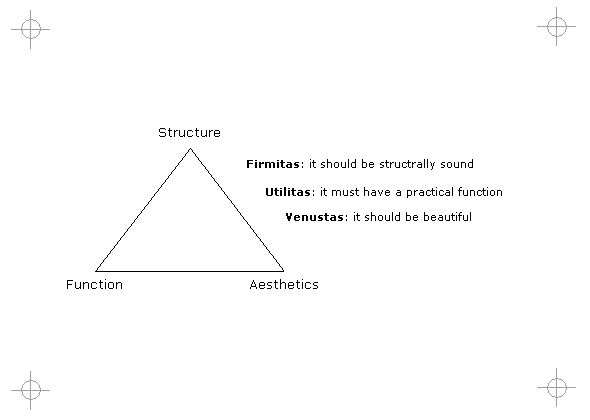|
Diagram
|
|
|

|
|
Title
|
|
|
Structure Function Aesthetics
|
|
Building Architecture
|
|
|
Vitruvius defined architecture as having the qualities of structure, function and aesthetics. It was a central framework and aspiration of reknowned architects such as Alberti and Le Corbusier.
|
|
Architecture Intensive Disciplines
|
|
|
Today the triad of structure-function-aesthetics is still as relevant. It no longer is a question of having these attributes but of striking a balance.
|
|
Case Study A: Large Corporate IT
|
|
|

|
|
|
The central definition we adopted for Software Architecture was based on Philip Krutchen's 4+1 view rather than the Vitruvian definition. We also placed too much emphasis on platforms - SAP and Microsoft. Although the pattern has relevance, we perhaps failed to convey this purpose of architecture as striking a balance between structure, function and aesthetics. Much like the modernist thinking we debated on one being more dominant than the other - "function over form", "structure over aesthetics". This was partly also due to the fact that applications development (structure and function) was a group structure separated from web development (function and aesthetics). While there was collaboration between the teams there were also differences. If the pattern in this case study teaches something, it is that the balance of structure-function-aesthetics should be the common definition of architecture and should be set as a core value.
It was difficult to convey to non-technical stakeholders the importance of structure. Refactoring and Quality Assurance was not given the attention it needed as project delivery and implementation of functional requirements were always paramount. In this environment the cost of change was often too high a price to pay. Yet design was also not given enough focus. Time after time, when something was compromised and would be addressed later - it would be left unresolved. The above architectural pattern is not always understood or accepted. Architects are asked to negotiate quality within the project framework of the time-cost-quality triad. It is then up to the architect to apply the above pattern.
|
|
Case Study B: Small Commercial Team
|
|
|

|
|
|
This pattern was introduced early in the environment as a definition for architecture. It helped us to establish not only a common understanding but also an objective which motivated much of the refactoring and re-engineering. Over the years function after function was added to the system - to the detriment of structure. The software had gotten brittle - a change could impact negatively on other parts of the system. It was accepted that some of the new structural designs needed to be implemented through refactoring before new functions could be added.
|
|
|